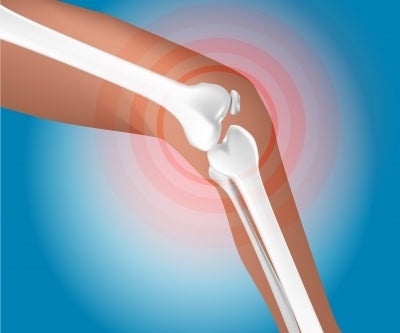Joint replacement surgeries are among the most common medical procedures performed in the U.S., but historically, data that can track their effectiveness hasn’t been widely available.
But a new database now open to all joint-replacement surgery providers is changing that. A team of doctors, led by researchers at University of Massachusetts Medical School in Worcester, is in the middle of a four-year project funded by the U.S. Agency for Healthcare Research and Quality.
In collecting data from more than 30,000 patients who received total joint replacement surgeries, the doctors involves in the $12 million project have established the FORCE-TJR database, which is a trove of information on total joint replacement surgeries.
A magnifying glass on recovery, readmission and more
What makes the database unique, and the leading source of information on total joint replacement surgeries, according to UMass Medical doctors, is that it encompasses a broader range of measures than are typically compiled by other sources.
Instead of simply reporting device failure and repeat surgeries, the FORCE database is the first in the nation to include patient-reported measures of joint pain and function, both before and after surgery, as well as clinical measures such as readmission and infection rates, adverse events, co-morbidities and other risk factors that may influence how well a patient does after surgery.
That means a doctor, hospital, or a larger health care system can use the database to determine the value of total joint replacement surgery, which is becoming increasingly important to an industry that’s moving toward value-based purchasing, according to Dr. David Ayers, one of the project leaders and chairman of the Department of Orthopedics and Physical Rehabilitation at UMass Medical School.
Many health care systems, including the UMass Memorial system, are entering into “bundled payments” contracts with the federal Centers for Medicare and Medicaid (CMS) in cardiac and joint replacement surgery. Ayers explained this will require providers to offer surgical care at a fixed cost over a period of 90 days, so having access to the type of information within FORCE is invaluable.
“It’s incredibly important for hospitals or providers that are entering into bundled payment initiatives,” Ayers said.
Now that the FORCE database is up and running, it has been opened up to the entire health care industry. That means any provider group, surgeon or health care system that performs total joint replacement surgeries can join for a relatively small fee and contribute their patients’ data and have access to the full database as well.
How it works
Patients whose providers are participating in the database are asked about their pain and function levels in affected joints before surgery, then asked again six months and 12 months afterward, and then annually. The database allows for risk adjustment so doctors can determine likely outcomes for patients based on their risk factors. It also provides data on working-age adults, which make up about 45 percent of the roughly 1 million total joint replacement surgeries done each year, according to Ayers.
All patients involved in initial project agreed to be contacted annually for follow-up purposes for the next 20 years, according to Dr. Patricia Franklin, the project’s lead investigator and the director of clinical outcomes and research for the Department of Orthopedics at UMass Medical School.
Franklin likened it to the Framingham Heart Study, the landmark project that has collected patient data on risk factors for heart disease since it launched in 1948.
Franklin said the FORCE database is the first to include patient-reported data, as well asclinical measures, and she said it will help providers and patients understand the optimal timing for surgery that will lead to the best possible outcomes, as well as factors that lead to the need for surgery, namely obesity, which is causing more cases of arthritic knees, and knee-replacement surgery, in patients under the age of 65.
Understanding the factors is also important to CMS. Franklin noted that total joint replacement surgery is the most costly procedure in the Medicare budget, and that CMS is now reporting data on readmissions and complications for patients who have undergone such surgeries.
“We’re entering an era of much more transparency and global reporting of these outcomes,” Franklin said.
Image source: Freedigitalphotos.net

